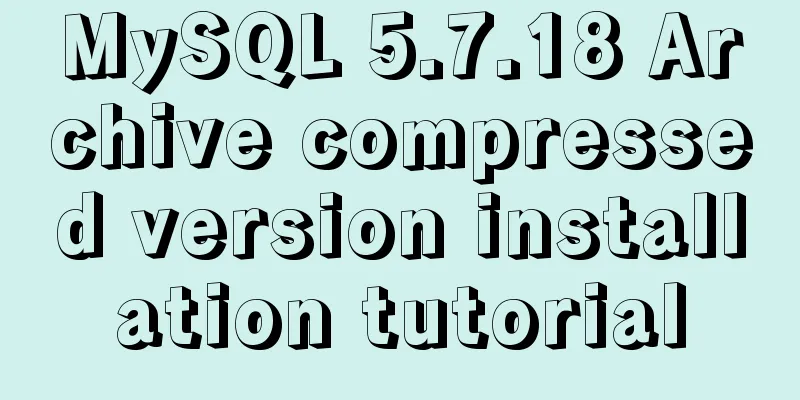An audio-visual Linux distribution that appeals to audiophiles

|
I recently stumbled upon the Audiovisual Linux Project, one of many specialized music-oriented Linux distributions. Audiovisual Linux:
This pro-audio Linux site hasn't shown a lot of activity since April 2017, but it does include a few updates and reviews from this year. Given its positioning and feature set, I decided to give it a run on my old Toshiba laptop. Install Audio Linux The website provides a clear set of installation instructions that require the use of Terminal. The first step after downloading the .iso is to burn it to a USB card. To do this, I used the GNOME Disk Utility's restore disk image. Once I had the USB setup and ready to go, I plugged it into the Toshiba and booted it. When the boot screen appeared, I set the boot device to the USB drive, and after about a minute, the ArchGRUB menu appeared. I boot Linux from this menu, which places me in a root shell session where I can perform an installation to the hard disk:
For this test I was willing to sacrifice a 320 GB hard drive in the Toshiba so I was able to use the previous Linux partition. Then, I did the following:
fdisk -l # find the disk / partition, in my case /dev/sda and /dev/sda1
mkfs.ext4 /dev/sda1 # build the ext4 filesystem in the root partition
mount /dev/sda1 /mnt # mount the new file system
time cp -ax / /mnt # copy over the OS
# reported back cp -ax / /mnt 1.36s user 136.54s system 88% cpu 2:36.37 total
arch-chroot /mnt /bin/bash # run in the new system root
cd /etc/apl-files
./runme.sh # do the rest of the install
grub-install --target=i386-pc /dev/sda # make the new OS bootable part 1
grub-mkconfig -o /boot/grub/grub.cfg # part 2
passwd root # set root's password
ln -s /usr/share/zoneinfo/America/Vancouver /etc/localtime # set my time zone
hwclock --systohc --utc # update the hardware clock
./autologin.sh # set the system up so that it automatically logs in
exit # done with the chroot session
genfstab -U /mnt >> /mnt/etc/fstab # create the fstab for the new system
At that point I was ready to boot into the new OS, so I did - and wow, the system came up!
Complete the configuration Once MusicLoversLinux was up and running, I needed to finish configuring it to play some music. By right-clicking the screen background, I started grabbing the application menu. X terminal and enter the remaining configuration commands: ping 8.8.8.8 # check connectivity (works fine) su # become root pacman-key –init # create pacman's encryption data part 1 pacman-key --populate archlinux # part 2 pacman -Sy # part 3 pacman -S archlinux-keyring # part 4 At this point, the installation instructions note the use of the pacman -Suy command, and that libxfont must first be installed using pacman -Rc libxfont. I followed this instruction, but a second round of pacman -Suy resulted in another dependency error, this time with the X 265 package. I looked further down the page in the installation instructions and saw the following suggestion: Once again, there is a bug with the arch package in the upstream repo. Try removing the conflicting package with "pacman -r ffmpeg2.8" and then do pacman -suy later. I chose to use pacman -Rc ffmpeg2.8, and then re-run pacman -Suy. (As an aside, typing all those pacman commands made me realize how familiar I am with APT. This whole process made me feel like I was trying to write an email in a language I don’t know, using an online translator.) To be clear, this is my order of operations: pacman -Suy # failed pacman -Rc libxfont pacman -Suy # failed, again pacman -Rc ffmpeg2.8 # uninstalled Cantata, have to fix that later! pacman-Suy # worked! Now back to the remaining instructions: pacman -S terminus-font pacman -S xorg-server pacman -S firefox # the docs suggested installing chromium but I prefer FF reboot Last point, fiddle with /etc/fstab to avoid access time modifications. I also tried installing Cantata again using pacman -S cantata, and that worked fine (no ffmpeg2.8 issues). I found DAC Setup > List cards on the application menu and it showed the built-in Intel sound hardware plus the USB DAC I had plugged in earlier. I then selected DAC Setup > Edit mpd.conf to adjust the output section of mpd.conf. I used scp to copy the album from my main music server to ~/music. Finally, I used the application menu. DAC Setup > Restart mpd. and the message on the conky screen says "MPD not responding". So I scanned the notes at the bottom of the installation instructions again and found the following: After each MPD update, you must do the following: # cat /etc/apl-files/mpd.service > /usr/lib/systemd/system/mpd.service # systemctl daemon-reload # systemctl restart mpd.service This will be fixed.
And it worked! Right now I'm enjoying Nils Frame's "Full Melody" from the album of the same name, playing the sound on my Schiit Fulla 2 high resolution. Time to copy some more music so I can give it a better listen. So... does this sound better than the dac hooked up to my normal work laptop? Guayadeque or GogglesMM? I'll have to see if I can discover a different one at some point, but for now all I can say is that it sounds great and I'm a big fan of the Cantonese/MPD combo. , I really like the heads-up display in the upper right corner of the screen. About Music The other day I was doing a little tinkering with my work hard drive and I decided to check to make sure all the music on it 1) was on my home music server and 2) vice versa (have to set up rsync for this someday soon). In doing so, I discovered some music I hadn’t enjoyed in a while, and it was kind of like buying a brand new album, only it was a lot cheaper. Finally, I was sad to hear a lot of recent work by Rashid Taha, whose wonderful blend of North African and French musical traditions, and his frank confrontation with the challenges of being North African and living in Europe, have produced some powerful and interesting music. Check out Taha’s version of “Rock the Kasbah.” I have a few of his songs scattered across different albums, and a while ago I bought Rachid Taha: The Definitive Collection which I recently started enjoying again. Operates from a Linux-friendly download store (no bloatware required to install on your computer). Summarize The above is the full content of this article. I hope that the content of this article will have certain reference learning value for your study or work. Thank you for your support of 123WORDPRESS.COM. If you want to learn more about this, please check out the following links You may also be interested in:
|
<<: MySQL 5.7.17 installation and use graphic tutorial
>>: Sample code for JS album image shaking and enlarging display effect
Recommend
Use js to write a simple snake game
This article shares the specific code of a simple...
MySQL 5.7.18 installation tutorial and problem summary
MySQL 5.7.18 installation and problem summary. I ...
Analysis of a MySQL deadlock scenario example
Preface Recently I encountered a deadlock problem...
Mysql sets boolean type operations
Mysql sets boolean type 1. Tinyint type We create...
Summary of the Differences between find() and filter() Methods in JavaScript
Table of contents Preface JavaScript find() Metho...
How to get the intersection/difference/union of two sets in mysql
Common scenarios of MySQL: getting the intersecti...
Docker binding fixed IP/cross-host container mutual access operation
Preface Previously, static IPs assigned using pip...
Detailed explanation of HTML table tags (suitable for beginners)
TABLE> <TR> <TD> <TH> <CA...
Complete tutorial on installing Apache, MySQL, PHP, LAMP on Ubuntu 18.04
1. Install Apache $ sudo apt update && su...
Using docker command does not require sudo
Because the docker daemon needs to bind to the ho...
A brief discussion on the issue of dates containing zero values in MySQL database
By default, MySQL can accept the insertion of 0 v...
Some suggestions for ensuring MySQL data security
Data is the core asset of an enterprise and one o...
XHTML: Frame structure tag
Frame structure tag <frameset></frameset...
Web Design Tips: Simple Rules for Page Layout
Repetition: Repeat certain page design styles thr...
MySQL 8.0.13 installation and configuration tutorial under CentOS7.3
1. Basic Environment 1. Operating system: CentOS ...












